Few people sacrifice themselves as completely as Dian Fossey did for the mountain gorillas of Africa. She fought tirelessly to protect them from poachers, cattle herders, zoo kidnappers, corrupt governments, and tourists. Dian left a comfortable life behind to make the misty slopes of an extinct volcano her home and headquarters. There, she patiently sought out the gorillas, mimicking their facial expressions and actions until they grew curious about her. Eventually, she had their complete trust and friendship, and considered them her family.
Dian spent eighteen years on and off living among the gorillas. She continually risked her health, life, and reputation to raise awareness of their plight and save them from extinction. While the mountain gorilla remains an endangered species, Dian’s research and conservation efforts have greatly contributed to their increased population in the years since her death.
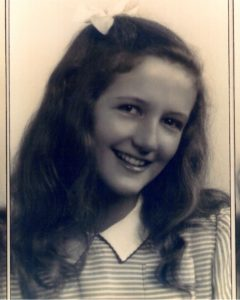
A Lonely Childhood
Dian Fossey was born in San Francisco in 1932. Her parents divorced when she was six, and her mother Kitty remarried a year later. Richard Price was a stern and distant stepfather who made Dian eat her meals in the kitchen with the help.
Lonely and frustrated, Dian turned to animals for emotional support. She was only ever allowed to have a goldfish, which was not replaced upon death. But Dian’s interested in animals continued unabated. She started riding horses as a child, and became a decorated equestrienne in high school.
Dreaming of Africa
The Prices refused to help Dian with college expenses once she eschewed the business path her stepfather laid out for a pre-veternarian program. She held various jobs and worked on a dude ranch in Montana, until she caught chicken pox and had to quit. She also had to quit the vet program, because she was terrible at physics and chemistry. She wound up getting an occupational therapy degree and working at a children’s hospital in Louisville, KY.
Still in love with animals, Dian was interested in Africa because she wanted to watch them roam free in habitats unspoiled by human contact. In 1960, a friend she’d made in Louisville went on safari and invited Dian along. She declined because she couldn’t pay her own way. At this point, Dian started saving to go to Africa. She wrote to her mother about it, thinking maybe the Prices would throw some money her way. They didn’t. In fact, they were horrified by the idea.
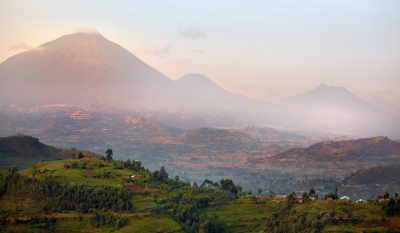
Dian wanted to go to Africa so badly that she used all her savings and took out a three-year bank loan to finance the trip. This upset her entire family. She assured them she would make her money back by selling articles and pictures about her experiences.
Meanwhile, Dian learned everything she could about Africa. She studied Swahili, safari guides, and the pioneering studies done by George Schaller, an American zoologist who had studied the rare mountain gorillas of the Belgian Congo in the 1930s.
Dian decided to add a couple of weeks to her safari to visit the Virunga volcanoes in Central Africa where the mountain gorillas lived. The Virungas comprise a chain of eight mostly-extinct volcanoes. The gorillas live thousands of feet in the sky, so high that the rain forest is cold and misty for most of the year.
Dian worried about how her allergies would react to this vastly different environment. Throughout her life, she had suffered many bouts of pneumonia and several asthma attacks, and was a smoker to boot. When she finally left for Africa, part of her safari luggage included forty pounds of various medicines.
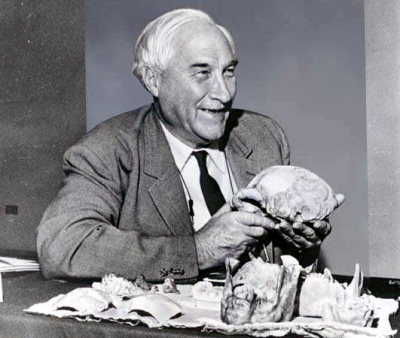
A Lucky Break
Dian left for Africa in September 1963. She’d hired a guide by mail who was to drive her to Kenya, Uganda, the Congo, and Southern Rhodesia (now Zimbabwe). His usual clientele were big game trophy hunters, so the two didn’t get along very well. She wore him out, constantly taking pictures, asking questions, and making him drive all over the place in search of the animals she wished to see.
As part of the safari, Dian was hoping to meet Dr. Louis Leakey, a renowned paleoanthropologist who started finding hominid fossils in the early 1930s. He established that humans were older than previously thought, and originated in Africa rather than Asia. In 1960, Leakey helped established Jane Goodall’s long-term study of chimpanzees in Tanzania.
By this time, Leakey was very famous and hard to pin down for an interview. So Dian decided she would just go to his camp and hope to run into him. She got lucky. Leakey was strolling the grounds and saw her. He seemed enthralled with her, and decided to give her a chance to explain herself.
She told him she wanted to study the mountain gorillas in the Virungas, and hoped to make her home there one day. He invited her to tour the local archaeological dig. While straining to get a picture of a giant giraffe fossil, she fell into the pit, broke her ankle, and vomited from the pain. Leakey and his wife took great care of her, and he told her to go see the gorillas if she could manage the ankle.
Dian’s guide initially refused to take her into the Congo because of political turmoil in the region. Also, he would need extra insurance on his Land Rover. Eventually he relented. They took a long hike up Mt. Mikeno and saw a group of six gorillas. At that moment, Dian knew that one day, she would return to study the gorillas.
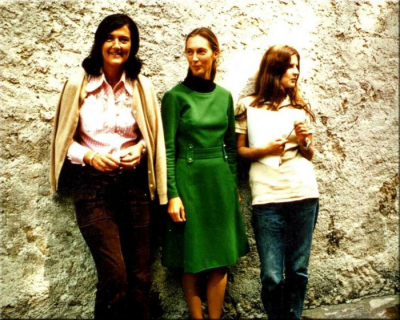
Joining Leakey’s Angels
After the safari, Dian went back to Louisville and her job at the children’s hospital. She wrote several articles about her trip and sent them out to national magazines. None of them accepted, but the Louisville Courier-Journal published her stories and photos about the gorillas and meeting Louis Leakey.
A few years later, Leakey was on a lecture tour that went through Louisville. Dian stood in line afterward to talk with him, armed with her articles. To Dian’s surprise, he recognized her, and they discussed her experience with the gorillas. He told her she might be just the person to start a long-term study of the gorillas in their habitat.
Dian was afraid that her lack of scientific education would hinder her chances of being chosen, but Leakey told her he preferred field researchers without preconceived notions of what they would observe and experience. Once he secured the funding, she would be headed back up the mountain.
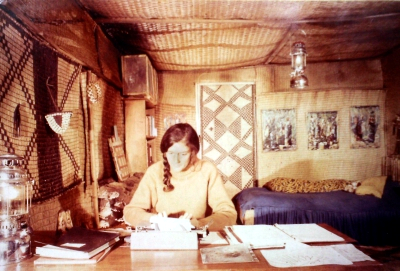
On Safari to Stay
Dian left for Africa again on December 15th, 1966, three years after her first safari. She would be funded in part by National Geographic, who was going to give her the Jane Goodall treatment: a TV special, magazine series, money for pictures that would appear in Nat Geo, and a contract to write a layman-level book based on her experiences with the gorillas.
She quickly learned to track gorillas from Sanweke, a Congolese tracker who’d worked for George Schaller. He taught her to study tree branches to detect movement and direction, and to look for knuckle prints in the ground and chains of dung left by groups of gorillas on the move.
The first time she made contact with the gorillas, it was with a group of nine. To get the gorillas accustomed to her presence, Dian used George Schaller’s research as her playbook. She tried to arouse their curiosity by imitating their facial expressions and gestures. To prove she was friendly, she walked on her knuckles and ate wild celery stalks.
It worked. She eventually made physical contact, and by then she had a professional photographer there to immortalize the moment for National Geographic. Soon after, she was allowed to play with and even cuddle the baby gorillas.
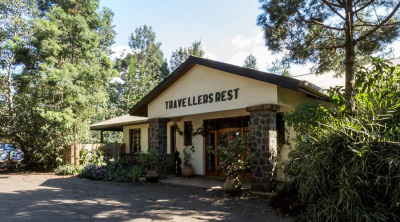
Poachers and Politics
Almost from the start, Dian had problems with poachers. Even though it was illegal by park rules, they hunted forest antelope and other game to stay alive and feed their families. Once the novelty of her being there had worn off, she had problems with camp workers and guards disobeying her, lying, stealing, complaining, and shooting at elephants who were merely grazing.
Dian wrote to Louis Leakey asking for help. She had a lot of loneliness, doubts and fears due to her isolation, and being bullied by the workers. But still, she was thrilled to be where she was.
In July of 1967, the Congo fell under a state of siege. Dian got a letter from the park director stating that they were going to come remove her from the mountain because it was no longer safe for her. They weren’t giving her a choice.
Rebel soldiers from Zaire came and dismantled her tent, and they held her in Rumangabo for two weeks. Then she tricked the soldiers into taking her to Kisoro, Uganda to settle a made-up registration issue with her Land Rover. She fled to the Travelers Rest Hotel at the foot of the Virungas, where she had stayed during her first safari. The owner notified the Ugandan military, who arrested the rebel soldiers.
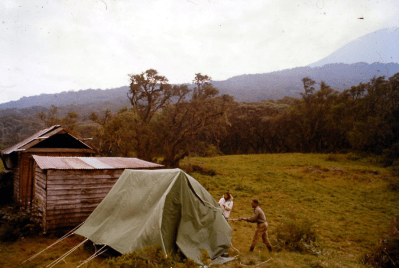
The Other Side of the Mountain
Dian discussed her options with Louis Leakey, and chose to resume her studies on the Rwandan side of the Virungas. On September 24th, 1967, Dian pitched her tent in Rwanda, officially founding her new camp. She named it Karisoke after the two mountains it’s nestled between—Karisimbi and Visoke.
Dian hired locals to help her do everything from tracking gorillas to camp chores. Within a few years, she had students from all over the world coming to Karisoke to work on a census of the gorillas.
Worried that she wouldn’t be taken seriously without scientific credentials, she applied to the zoology program at Cambridge. They accepted Dian as a PhD student in 1969, and she split her time between England and Karisoke. While she was away, she left student researcher Alexander (Sandy) Harcourt in charge of the camp.
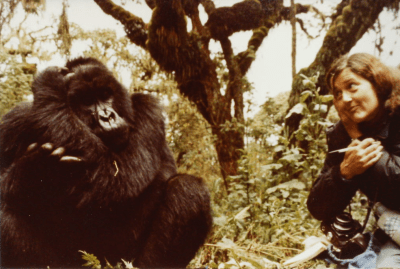
Gorillas Are a Girl’s Best Friend
Of all the gorillas she encountered and befriended, Digit was the dearest to her heart. He was about five when she found him, and had a broken finger, thus the name. Since there were no other gorillas his age to play with, Dian became his playmate. Over the next several years, she watched him grow and mature into an independent gorilla.
A group of poachers stumbled upon Digit’s group in late 1977. He bore the brunt of their attack so the others in his group could get away. Digit was speared several times, decapitated, and his hands were cut off.
Dian immediately established The Digit Fund to raise money for gorilla conservation efforts. Isolated as she was, it was difficult to do much other than write letters. She still had the Rwandan government to deal with, and they were more interested in conservation through tourism than they were in Dian’s anti-poaching patrols.
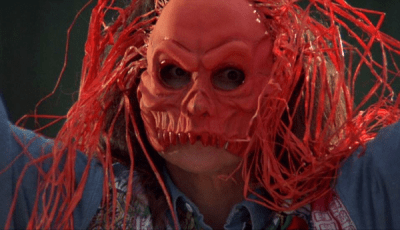
Black Magic Woman
Dian was vehemently opposed to poaching, which was illegal in the Park. But the guards didn’t get much pay, and they were easily paid off by the locals, who were just trying to survive. The poachers were usually after antelope. Gorillas were mostly collateral damage, although some poachers killed them for their heads and hands, which they later sold. She was also against cattle herding through the park, because the herds destroyed the plants the gorillas eat and often drove the gorillas to higher ground where they can’t function as well.
Dian took serious measures against both poaching and herding, which earned her some enemies. Some were her students, who were against the constant patrols to cut down snares and destroy traps. Sometimes she and her workers and a few of her fellow researchers caught poachers and imprisoned them for short periods. Dian got a bit of a reputation as practicing witchcraft because she would give imprisoned poachers her version of a black magic show, which consisted of dime store magic tricks performed in garish, terrifying Halloween disguises she’d bring back from the States.
Dian’s behavior caused a rift between her and several of her students, particularly Sandy Harcourt. Sandy sided with the Rwandan government, who wanted to turn Karisoke into a tourist facility. He helped them establish the Mountain Gorilla Project, an organization that used Dian’s and Digit’s names to raise money, but funneled it all into tourism promotion.
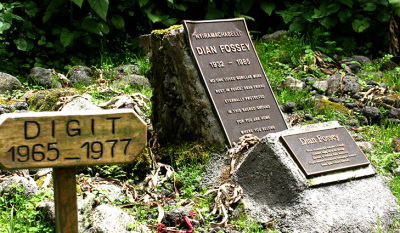
The Curse of Death
Dian went to Ithaca, NY in 1980 as a visiting professor at Cornell, and used the next three years to finalize Gorillas in the Mist between lectures. Then she went on a book tour. She raised a lot of awareness along the way, and learned a few things herself, as person after person told her about the thousands they’d donated to the Mountain Gorilla Project.
By the time she returned to Karisoke in 1983, it was in shambles and running on fumes. She started paying maintenance and payroll costs from her book proceeds. No sooner than she’d fixed the place up a bit and got the anti-poaching patrols going again, she had to jet off to another lecture tour. By this time, she was really feeling pressure to leave Rwanda and wondered how many more times they would renew her visa.
Soon after putting together a group of doctors and veternarians to look into a spate of recent gorilla deaths, Dian found her two gray parrots poisoned and on the verge of death. Days later, she found a wood carving of a puff adder on her cabin doorstep. She knew well enough what this meant: the curse of death was upon her.
On the morning December 26th, 1985, Dian was found murdered in her cabin, her face split diagonally with a machete. Her murder remains unsolved, though many believe it was the work of poachers.
A Living Legacy
Dian’s gorilla conservation efforts continue to this day. In 1992, the US branch of the Digit Fund became the Dian Fossey Gorilla Fund International. Following the Rwandan genocide, Karisoke was moved to Ruhengeri, where research continues. Though the mountain gorillas are still endangered, their population continues to rise. And hope comes in many forms—back in 2012, two young gorillas were spotted working together to destroy a poacher’s snare.

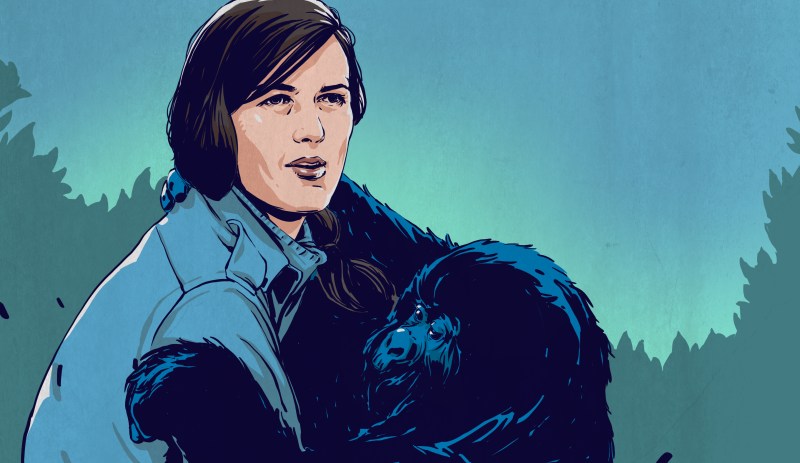














“The Prices refused to help Dian with college expenses once she eschewed the business path her stepfather laid out for a pre-veternarian program. ”
I can see why. That’s a much harder program than the other. ;-)
When that one regarding the two younger simians working to dismantle a snare broke some four years ago, I was amazed. I still am. The movie about her work, was then, and still is, a classic. Incidentally all but one of the simians were local. That’s right the big guys hired themselves for the roles they originally created. The actress enjoyed herself there. Oh and the country not all that long ago found a new colony, it seems her work did pay off. Now we need to update the other colony, it is barely big enough to survive on its own.
“”No we can’t teach them,” she said. “We try as much as we can to not interfere with the gorillas. We don’t want to affect their natural behavior.””
Survival is a “natural behavior”.
That, is a very nice write up! Thank you.
So….
that’s what Sigourney Weaver looks like without stage makeup!
B^)
So Gorillas are 500lb wild animals that can tear a man’s arm out of it’s socket and she spend years with them without incident, but when she pissed off a few humans she was killed, makes you wonder which animal is more dangerous.
If you pissed the gorilla off I’m sure it would tear you apart as well.
What’s to wonder about? Man is by far the more dangerous animal when survival is on the line. Sometimes even when it’s not.
It is easy to “other” the poachers in this story, as they are by and large not a sympathetic lot. Almost certainly no one here has experienced prolonged hunger let alone starvation. People get ugly in those conditions. I’ve seen people do ugly stuff to people they know and like under those conditions.
Fossey did a lot for educating the public about gorillas and their plight, but one of the most important lessons that we can learn from her tragedy is that the most successful conservation works with the local populations, it does not antagonize them.
When I hike in the woods it’s not the mountain lions and black bear that I worry about. It’s humans first and ticks a distant second.
As much as I appreciated the article, the story and her courage it’s seems to me that it’s a bit out of topic?
I said it less politely – but it looks like my comment wasn’t approved. I just asked “Where’s the hack?”
Not saying it’s a bad article, I just have no idea what it’s doing on hackaday.
https://hackaday.com/category/biography/
Enjoy 55 guaranteed hack-free articles about important/neglected/favorite scientists!
Wait. Why this is not a thing?
Why hackaday doesn’t create a category called “Not an Hack”, like the FPGA Tutorial thing, brand and stuff and fit all this interesting articles there? So people can search them / avoid them without all the drama.
Hell I would be happy to come here and read about food if is a good article, but only if I can filter it from what I come here for, hacks.
The difference being that most of those scientists have relevance to the fields involved in hacks. This one doesn’t. It might be the most irrelevant post I’ve ever seen here.
It demonstrates the “can do” attitude hackers are suppose to have. Especially in the face of adversity.
If a “can do” attitude is at that is required, let me suggest that excerpts from “The Little Engine that Could” would still be far more appropriate.
I wondered about that, then figured since she did this without training, she was “hacking”, learning through exploring things.
The other possibility is that they’ve been having posts about women in science, there’s been a general push to do that, and Diane Fossey would fit that, like Marie Curie and Ada Lovelace, and the women who worked at NASA.
Michael
It’s part of the “aren’t women great” series. So yes, you’re right, but if you say things like that you risk of your post being removed.
Then I better don’t say I agree with “is it hacking?”
:)
C’mon, this post doesn’t belong here and you guys know it full well.
HAD Women in Science series. Definitely worthy of recognition for her dedication and contributions. She belongs.
Let’s momentarily forget for the sake of argument that this is a woman.
The article describes a person who did great things with animals, and the biography of this person.
No hack is described.
Why do you think this article belongs on Hackaday?
This article belongs on Hackaday because it is interesting to some of Hackaday’s readers.
If you’re one of the people who’s not interested in this article, let me introduce you to a fantastic tool you probably already have. It’s called a scroll wheel, and it’s found on most computer mice. You can use this wheel to scroll past articles you’re not interested in, saving you from having to whine in the comments about how you don’t want to see certain things on Hackaday.
I use this “scroll wheel” to skip articles I’m not interested in. Many of them are hacks!
What you call whining, I call asking questions and trying to have a discussion. Granted, that’s not going very well, because it looks like the questions are usually ignored.
Your argument why this article should be on hackaday is not satisfying. There are many things which may be interesting to some of Hackaday’s readers. Should we have articles about kittens? Oil painting? How about the discovery of America? The life of a sailor in the mid 80s?
Those subjects may similarly be interesting to some HAD readers yet have nothing to do with hacks.
I do voluntarily skip articles, such as the article about hydrogen cars, which is also not describing a hack.
“I do voluntarily skip articles, such as the article about hydrogen cars, which is also not describing a hack.”
Or maybe a bunch of hacks trying to make the idea viable.
@Ostracus
It’s not an article about the hacks to make the article viable of those hacks are not discussed.
Those hacks, if they exist and aren’t just plain engineering, may actually be the thing which would be interesting.
Ugh before coffee.. trying again.
It’s not an article about the hacks. If those hacks were discussed, that would make the article interesting. Now the hydrogen article is just top view piece about the working product.
Those hacks, if they exist and aren’t just plain engineering, may actually be the thing which would have been interesting.
Keep those articles coming!
Two fundamental inspirational books in my young life were: a biography of Marie Skłodowska Curie and the book on chimpanzees by Jane Goodall.
May your series bee as inspirational to young girls and boys as those two were to me.
And, oh, to those saying “it’s just because they’re women”: folks, each one of those women presented in this series is probably more brilliant than you and me taken together. It’s in the spirit of a good hacker to acknowledge brilliance where brilliance is.
And, oh, to those saying “not-a-hack” — I haven’t seen more capable hackers than those in the zoology department. I’ll spare you that one story about a guy weighing bees (before and after harvesting nectar, it’s the difference he was after) with the help of an aluminized foil ripped out of a condenser. I didn’t know much about Dian Fossey (so thanks for the article again!), but Jane Goodall was definitely a scientist. She changed much how zoologists regard “higher” animals — against much odd at the time.
So… keep those articles coming!
It is irrelevant how brilliant the person is who has done something. If the article doesn’t describe what exactly the hack was, then it’s not really an article about a hack but just an ode to a person.
Let’s keep those articles on websites that specialise on those kinds of inspirational things.
Similarly – remarks such as “hackers are people who are demonstrating a can-do mentality”, and “it’s the spirit of hackers to acknowledge brilliance” are just vague. Give some concrete examples! That’s what’s interesting.
It would be great to see that hack that you just described – using some foil to do something it wasn’t meant for. That’s exactly how I would describe hack.
Fantastic! Let’s have that as an article and not vague articles about people who have overcome difficulty in their lifetime.
Not a hack?
Wrong.
This lady hacked gorilla culture and fitted in.
That’s some hack in my eyes.
True, those activities “She tried to arouse their curiosity by imitating their facial expressions and gestures. To prove she was friendly, she walked on her knuckles and ate wild celery stalks.” are in the article.
28 words describing how she (in your words) “hacked gorilla culture and fitted in”.
The rest of the article (2492-28=2464) words are not about hacking, which is approximately 99%.
So you’re being very generous attributing “hack” to an article otherwise describing a biography.
If we take your guideline of judging whether the article is a hack or not, it would be a very bad written and fluffy article. Who wants to wade through 99 % unrelated content to get to the hack?
Otherwise, it’s a good written article. It just doesn’t belong on Hackaday.
It’s a good thing you don’t decide what belongs on Hackaday. Judging content by word count? What is this, grade school?
Well thanks for engaging, but you haven’t actually addressed the point that I’m making.
Actually, the piece says Leakey wanted people who didn’t have preconceived notions. So lacking any training, she learned from the situation. She only pursued a degree later when she felt that she’d not be listened too without one.
When I read Steven Levy’s “Hackers” in 1984, I didn’t really grasp what the term meant. But about 1989 I reread it, and did. I was spending a lot if time with some who was five years old. I had no previous experience with chikdren, so I.learned by aking small steps and seeing the results. And I learned a lot about her, and people in general, because I was observing her rather than trying to impose things I already “knew”.
” Hacking” is an overused term, and I think improperly used much of the time. Peoole at MIT weren’t hacking when trying to access computers, they were trying to access computers so they could learn by using computers, rather than reading a book and then getting access to computers. A scrpt kiddie can’t be a hacker because they are using other people’s work. But learning by doing things is hacking.
Michael
No it’s not.
Learning from a situation is not hacking.
Learning by doing things is also not hacking.
There are plenty of people who figure out what they want to do later in life and then pursue a degree to so do.
Luckily we have dictionaries to help us out here. Typically, hacking only refers to getting unauthorised access to computers, computer networks, or sometimes computer programs.
Hacking can also refer to non-malicious activities, usually involving unusual or improvised alterations to equipment or processes.
https://www.techopedia.com/definition/26361/hacking
My definition of hacking is to make a thing do something it wasn’t meant to do.
That’s why I also object to the term “brain hacking”, when it involves doing things differently. It would be brain hacking if they physically changed the brain, as far as I’m concerned.
Just applying the term hacking by figuring out what you need to do to get somewhere is not hacking.
It’s great that you learned a lot from her, but it’s not hacking.
“The Invasión of the Politically Correct Body Snatchers” has finally arrived to Hackaday.
In six months time, one of each two articles written by a woman, will be mandatory.
“Cousas veredes, amigo Sancho”